Sana Rahmani
Dynamic Prototype Rehearsal for Continual Learning in ECG Arrhythmia Detection
Jan 13, 2025Abstract:Continual Learning (CL) methods aim to learn from a sequence of tasks while avoiding the challenge of forgetting previous knowledge. We present DREAM-CL, a novel CL method for ECG arrhythmia detection that introduces dynamic prototype rehearsal memory. DREAM-CL selects representative prototypes by clustering data based on learning behavior during each training session. Within each cluster, we apply a smooth sorting operation that ranks samples by training difficulty, compressing extreme values and removing outliers. The more challenging samples are then chosen as prototypes for the rehearsal memory, ensuring effective knowledge retention across sessions. We evaluate our method on time-incremental, class-incremental, and lead-incremental scenarios using two widely used ECG arrhythmia datasets, Chapman and PTB-XL. The results demonstrate that DREAM-CL outperforms the state-of-the-art in CL for ECG arrhythmia detection. Detailed ablation and sensitivity studies are performed to validate the different design choices of our method.
Transfer-based adaptive tree for multimodal sentiment analysis based on user latent aspects
Jun 27, 2021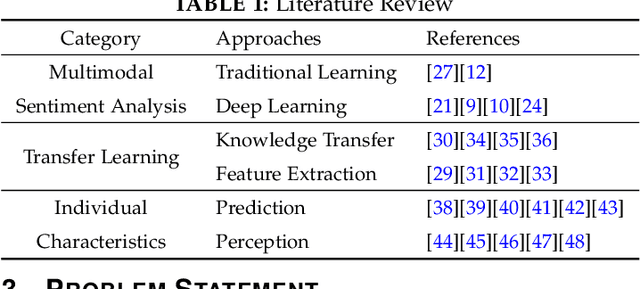
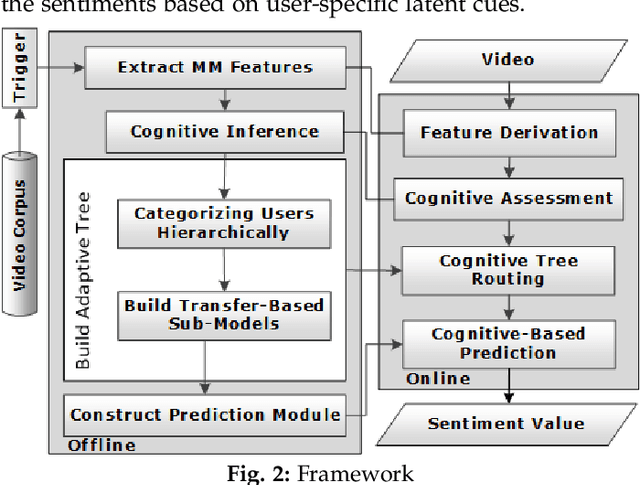

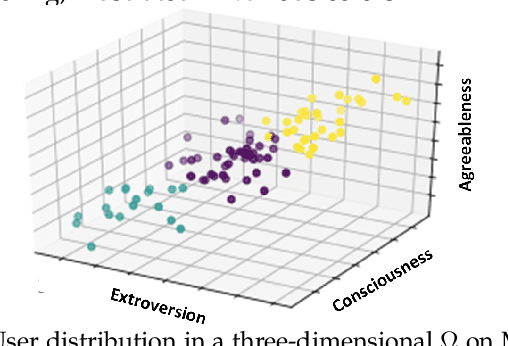
Abstract:Multimodal sentiment analysis benefits various applications such as human-computer interaction and recommendation systems. It aims to infer the users' bipolar ideas using visual, textual, and acoustic signals. Although researchers affirm the association between cognitive cues and emotional manifestations, most of the current multimodal approaches in sentiment analysis disregard user-specific aspects. To tackle this issue, we devise a novel method to perform multimodal sentiment prediction using cognitive cues, such as personality. Our framework constructs an adaptive tree by hierarchically dividing users and trains the LSTM-based submodels, utilizing an attention-based fusion to transfer cognitive-oriented knowledge within the tree. Subsequently, the framework consumes the conclusive agglomerative knowledge from the adaptive tree to predict final sentiments. We also devise a dynamic dropout method to facilitate data sharing between neighboring nodes, reducing data sparsity. The empirical results on real-world datasets determine that our proposed model for sentiment prediction can surpass trending rivals. Moreover, compared to other ensemble approaches, the proposed transfer-based algorithm can better utilize the latent cognitive cues and foster the prediction outcomes. Based on the given extrinsic and intrinsic analysis results, we note that compared to other theoretical-based techniques, the proposed hierarchical clustering approach can better group the users within the adaptive tree.
EmoDNN: Understanding emotions from short texts through a deep neural network ensemble
Jun 03, 2021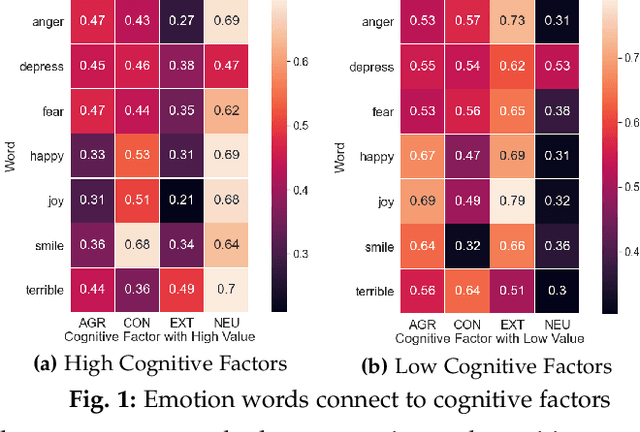

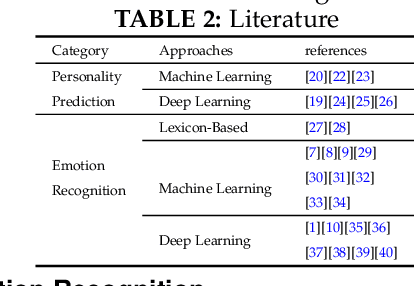

Abstract:The latent knowledge in the emotions and the opinions of the individuals that are manifested via social networks are crucial to numerous applications including social management, dynamical processes, and public security. Affective computing, as an interdisciplinary research field, linking artificial intelligence to cognitive inference, is capable to exploit emotion-oriented knowledge from brief contents. The textual contents convey hidden information such as personality and cognition about corresponding authors that can determine both correlations and variations between users. Emotion recognition from brief contents should embrace the contrast between authors where the differences in personality and cognition can be traced within emotional expressions. To tackle this challenge, we devise a framework that, on the one hand, infers latent individual aspects, from brief contents and, on the other hand, presents a novel ensemble classifier equipped with dynamic dropout convnets to extract emotions from textual context. To categorize short text contents, our proposed method conjointly leverages cognitive factors and exploits hidden information. We utilize the outcome vectors in a novel embedding model to foster emotion-pertinent features that are collectively assembled by lexicon inductions. Experimental results show that compared to other competitors, our proposed model can achieve a higher performance in recognizing emotion from noisy contents.
 Add to Chrome
Add to Chrome Add to Firefox
Add to Firefox Add to Edge
Add to Edge